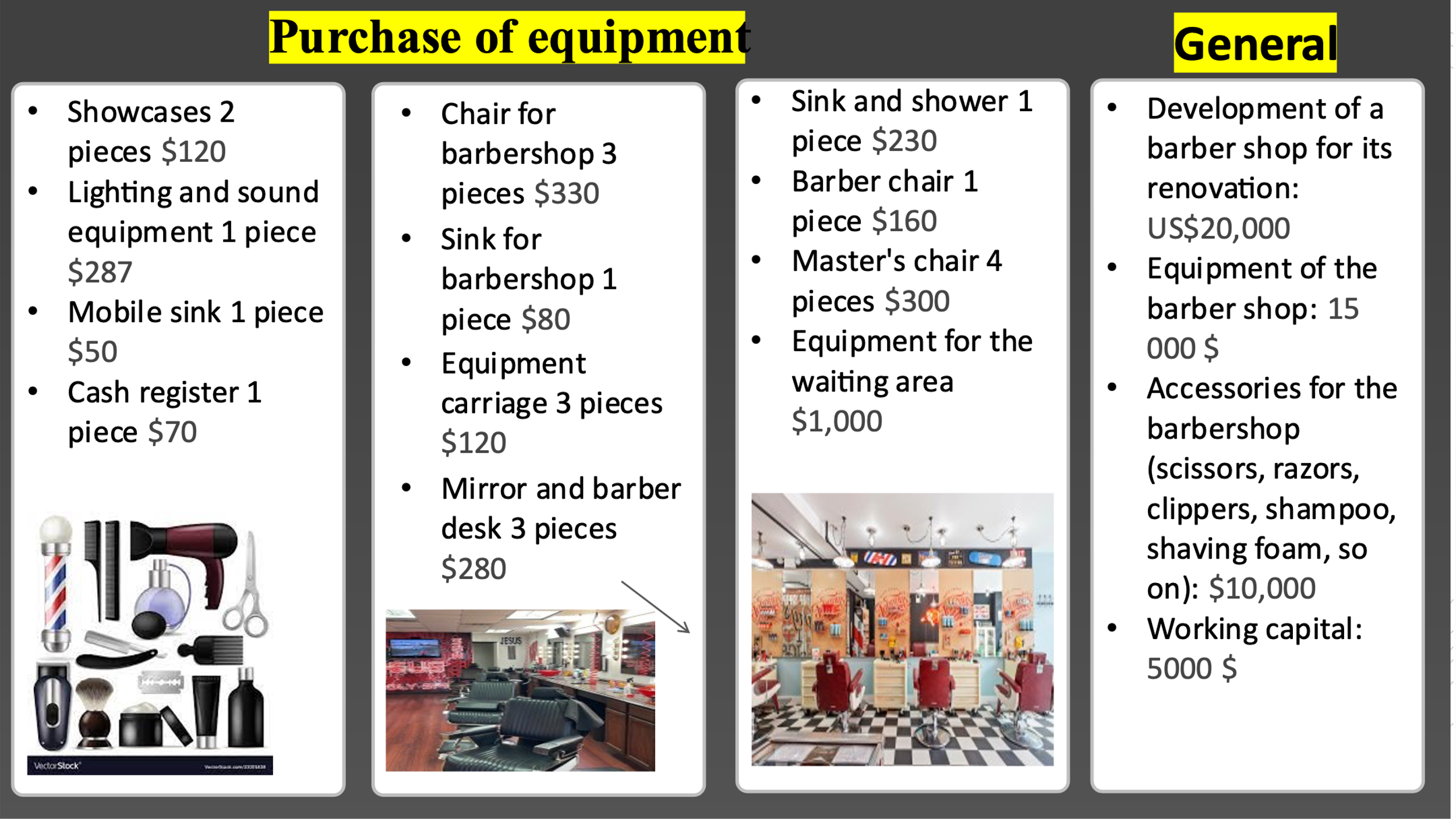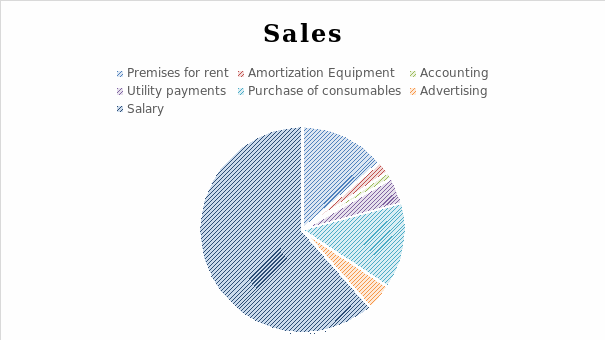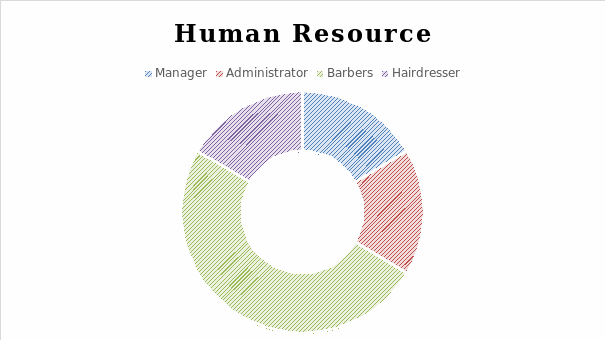Introduction
A barbershop is a hairdressing salon with a wide range of services designed for the male audience. Initially, these establishments emerged in Europe and then migrated to America (Perry, Rahim, and Davis, 2018). The real boom began in 2000 when bearded men started to fashion on the catwalks of the world, and the masses actively promoted the culture (Marsiwi et al., 2019). Thus, it is an image studio where it is possible not only to have a haircut but also to choose a new style. Hence, it is essential to create a business project for the “BARBING SALON.”
Summary of the Project
Barbing Salon, which will be organized on the UCA campus (University for the Creative Arts) located in Epsom, is focused on the budget segment of consumers because the primary customers will be students. The fundamental competitive advantage will be the optimal price-quality ratio, working hours from 9.00 to 21.00, without breaks and weekends (Lock, 2017). Barbing Salon will be focused on the segment of consumers with average income, and the cost of services will consider competitive offers; in the future, there is a prospect of consolidation and development of new directions.
Market Research
To explore the market demand among students, a questionnaire was conducted about the need for a barbing salon at the UCA campus (University for the Creative Arts) located in Epsom. Thus, questionnaires were sent to a sample of 5000 students. The selection included students of different courses, backgrounds, and even professors; the results showed that almost 87% of the respondents would use the barbershop services. In addition, below is the questionnaire and one of the answers received.
Table 1: Questionnaire
Target Audience and Services
It is significant to mention that the main clients of the salon will be young people aged 20-26 wishing to have a fashionable and original appearance. Moreover, the barbing salon visitors can be men from 30 years old with an income above the average, who have a beard and mustache. Thus, the portrait of the average client is a student in college who has a beard and a mustache (Ferdani et al., 2020). The standard set of services will include men’s haircuts with scissors with further styling, machine haircut hair, and hair coloring and graying camouflage. Additionally, it is eyebrow correction and design, beard and mustache modeling, hazard shaving, and mustache and beard epilation (Ferdani et al., 2020). It is significant to state that services can only be performed in the salon by appointment and on a first-come, first-served basis.
Financial Plan

The Purchase of Consumables
It is essential to acquire all cosmetic products before opening a barbershop: shampoos, hair styling, styling products, dyeing, and shaving products. Besides, it is consumables, disposable towels, hairdressing equipment, detergents, and disinfectants (Kwitonda, 2020). Products can be placed in the window at the entrance or directly in the barbershop’s main hall, allowing customers to get acquainted with cosmetics brands. The total structure of monthly expenses is presented in the figure. Almost 60% is for salaries and insurance premiums, and another 13% is for renting the premises and buying supplies (Kerzner, 2017).

Organizational Structure

The staffing of the barbershop is a manager, administrator, barbers (3 people), and a barber with additional hair stylist skills. It is possible to conclude a civil law contract with a marketing specialist, content manager, cleaning company, and accounting firm (Kerzner, 2018). The manager also performs the general management of the barbershop. Its responsibilities include the purchase of necessary consumables, interaction with supervisory organizations, the management of staff and remote services, and contractual work.
The manager is responsible for the results of the work and is accountable. By default, these functions are assumed by the entrepreneur himself. The salary is composed of a fixed part and a percentage of sales (2%) (Hillson, 2017, p. 71). The administrator makes client appointments, answers the phone, meets guests, accepts charges, and keeps cash reports. His salary is independent of performance and consists of a stiff salary. In addition, barbers specifically serve customers and are responsible for the quality of the services provided. In addition to their salary, these professionals receive a bonus part of 10% of the value of the services they provide (Hillson, 2017, p. 73). Incentive payments begin on 2-3 months of work when the client base is already accumulated, and the average attendance will stay below 20 people per shift.
Figure 3: Salary
SWOT Analysis
Table 2: SWOT
Conclusion
Therefore, the business project for “BARBING SALON” includes such features as location, specifically the UCA campus located in Epsom. This indicates that the primary signature of the institution is men with mustaches and beards, who are students and teachers. Thus, the prices offered by “BARBING SALON” are oriented toward middle-income people, so the institution is a budget option. At the same time, barbers are qualified and provide a wide range of services. Moreover, market research has shown that “BARBING SALON” will be extremely successful on the territory of the UCA campus located in Epsom.
Reference List
Ferdani, A. et al. (2020). “Effect of Service Quality, Tariff Perception, and Brand Image Toward Customer Satisfaction,” International Journal of Social Sciences, 3(1), pp. 90-99.
Hillson, D. (2017) Managing risk in projects. Milton Park: Routledge.
Kerzner, H. (2018) Project management best practices: Achieving global excellence. New Jersey: John Wiley & Sons.
Kerzner, H. (2017) Project management: A systems approach to planning, scheduling, and controlling. New Jersey: John Wiley & Sons.
Kwitonda, J. (2020) “The marketing mix and hygienic barbershop use: A Formative study,” Social Marketing Quarterly, 26(4), pp. 361-377.
Lock, D. (2017) The essentials of project management. Milton Park: Routledge.
Marsiwi, C. et al. (2019) “Investment feasibility analysis in financial aspects of startup business in lifestyle combining barbershop and coffee shop over Pt. Jeeva Work Corporation,” Journal of Multidisciplinary Academic, 3(4), pp. 97-100.
Perry, A., Rahim, E. and Davis, B. (2018) “Startup success trends in small business beyond five years: A qualitative research study,” International Journal of Sustainable Entrepreneurship and Corporate Social Responsibility, 3(1), pp. 1-16.